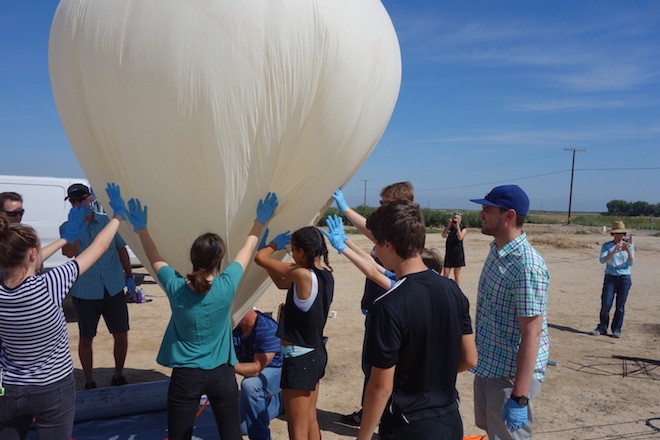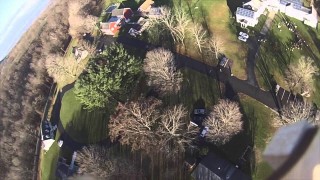Just before dawn on the morning of March 19th, a group of Pacific Ridge School (Carlsbad, CA) 8th-grade students, faculty members and parent volunteers headed for Elmore Desert Ranch to launch a Conceptual Physics class project into the stratosphere.
The project – a high-altitude weather balloon carrying scientific experiments – went on a 40-mile journey, reaching an altitude of 94,000 feet – before popping and descending back to earth, landing among agricultural land in the Imperial Valley.
For a month before the launch, students designed experiments, built the balloon’s payloads, plotted its flight path and determined the best methods of data collection.
The students mounted resilient GoPro cameras wrapped in chemical glove warmers on the payloads to capture both still photos and video in sub-freezing temperatures. They created capsules out of Styrofoam insulation to protect the technology, and loaded a number of items to test at extreme high altitudes, including a leafy plant, an iPod, a jar of tardigrades organisms, marshmallows and a note written in invisible ink. The classes used balloon flight modeling software to project a potential flight path, and secured permission for the flight from the Federal Aviation Administration and the military.
While only a handful of Pacific Ridge community members could make it to the launch, many more followed along at home via a real-time map powered by an onboard GPS, and a student-run livestream broadcast of the entire process, from balloon inflation to retrieval.
“It was great to see the whole community so engaged in a science and engineering project,” said Melius. “We use creative experiments as a teaching tool in Physics all the time, but a project of this scale really has an impact. Students can see how different technologies and disciplines come together and how many different skill sets go into making something like this happen. They really got into it and their enthusiasm was contagious.”



